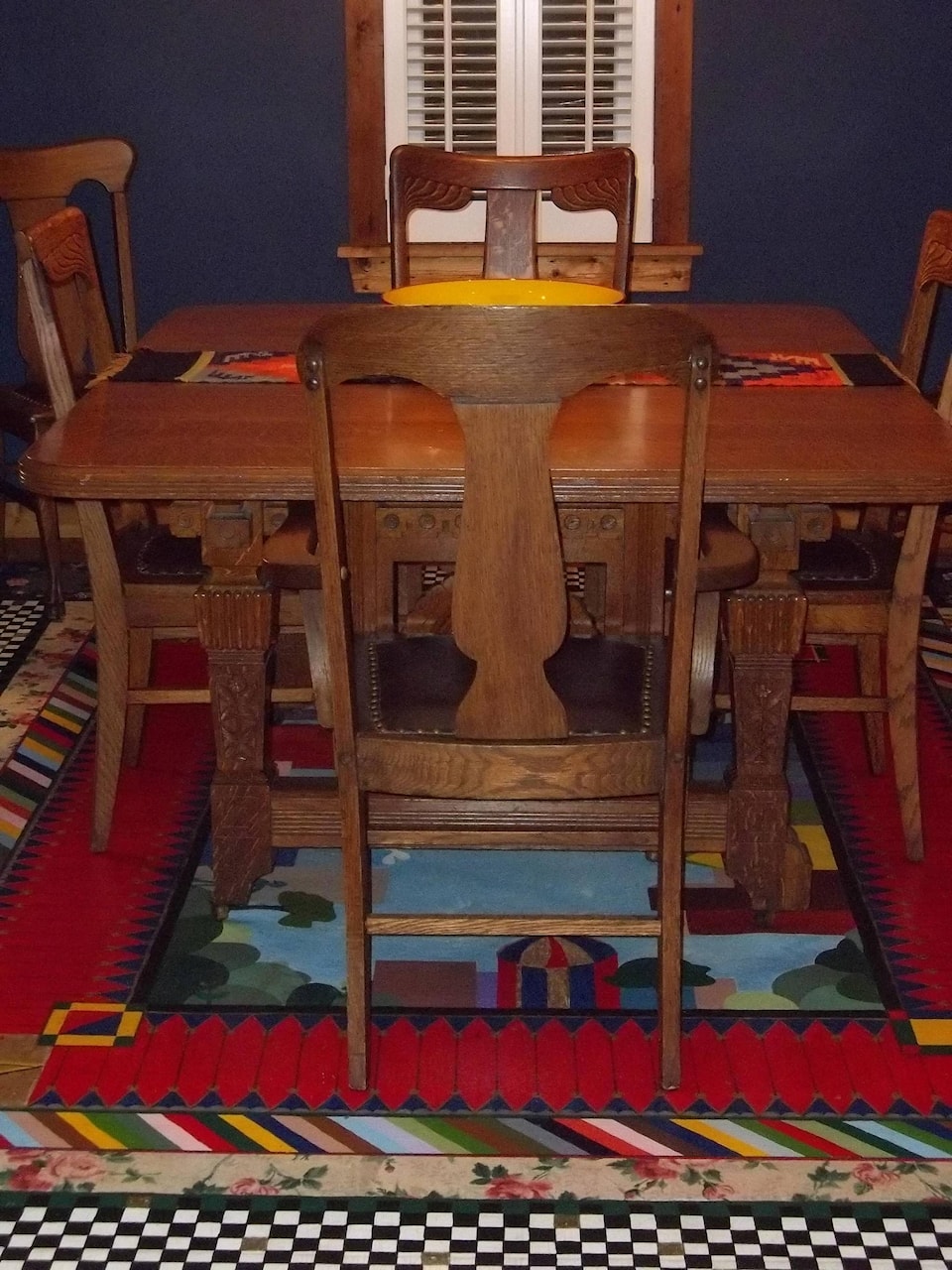Floorcloths are beautiful to look at, warm underfoot, easy to care for and can convey any style from richly historical to folksy to modern chic. Sounds like an irresistible product for the home. Painted canvases have been decorating floors for centuries, thought to have originated in France in the 1400s as an offshoot of wall hangings, tapestries and table runners. This handpainted art form was adopted in England and then brought over to America. The most popular designs were geometric patterns featuring checkerboard, diamonds and cubes. In the early days, these floorcloths, often painted by the woman of the house, imitated the look of expensive marble, tile and wood flooring.
The paints used for these early pieces were produced using natural pigments mixed with linseed oil, hence the familiar name oil cloths. They were painted freehand, stencilled and block painted. The same techniques are used today, but we now have access to ‘greener’ materials, including water-based paints and varnishes, which share the added bonus of drying faster.
When Linoleum was developed in England in the mid-1800s and subsequently produced in North America, it became the popular choice for floors, and interest in canvas floorcloths declined.
However, in the 1950s and 1960s, a renewed passion for one of a kind items blossomed and artisans returned to this art form. The familiar historic patterns were copied, and new designs emerged with a folk art edge. Today, anything goes. A floorcloth can be designed to complement the most contemporary urban loft, adding artistic flair wherever it lies.
I spoke with artist Mary Lynn Engel about the renaissance of this style of floor covering. Engel’s website, www.designbymle.com, features a gallery of her work, and she adds that there are as many different designs as there are artists. The imaginative shapes and designs of these floor coverings fit right into a child’s room and can be customized to suit the child’s age and interests. A well-made floorcloth stands up to wear and tear in a playroom, furniture in a dining room, foot traffic in a hallway, and spills in the kitchen. In the photo shown here, the vibrant canvas looks brand new and yet it has been under Engel’s dining table for eight years.
Another important feature to consider is the ease and safety of these floorcoverings in areas frequented by walkers and wheelchairs ñ there’s no carpet pile to contend with. They are a good choice where allergies are an issue. Clean with a damp mop and non-abrasive, earth-friendly cleanser.
Engel’s technique includes double priming #10 canvas, then applying a basecoat of latex paint. After the artwork is completed, no less than seven coats of urethane are applied to seal and protect, finished by a layer of butcher wax. If you would like to try your hand at this creative endeavour, you can experiment first with a smaller project such as place mats or a table runner. As a last minute gift idea, you could include a promise in a card to a friend to design a small floorcloth for them in the new year or as a birthday gift. That’s a truly unique present that would be cherished for many years to come.
Written by Debbie Travis and Barbara Dingle. Email decorating questions to house2home@debbietravis.com.
